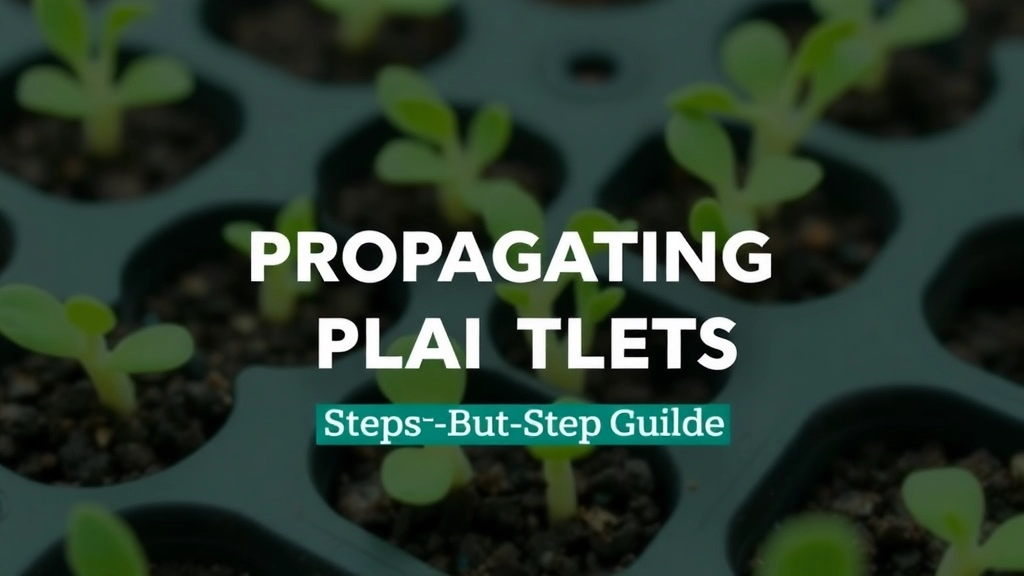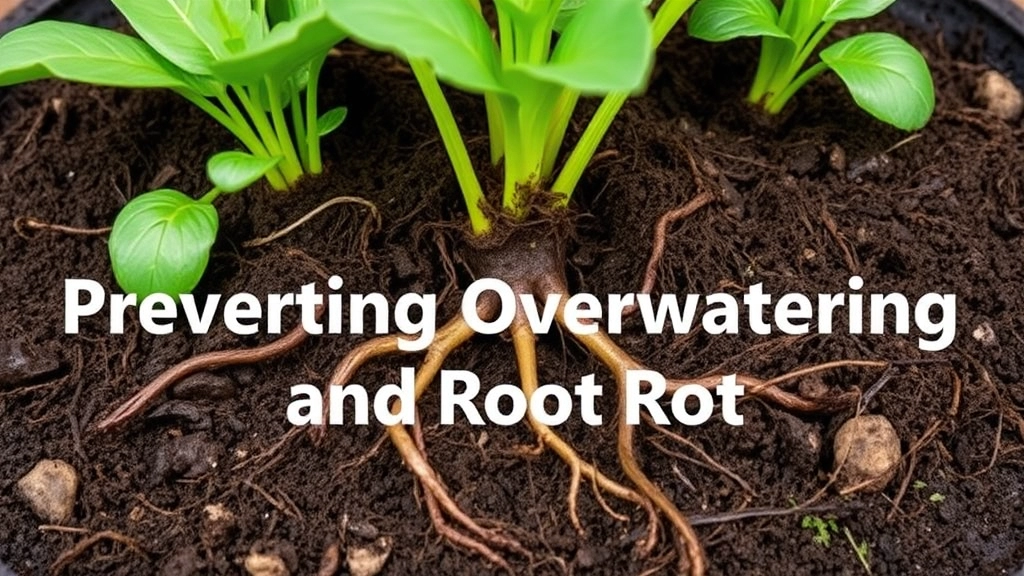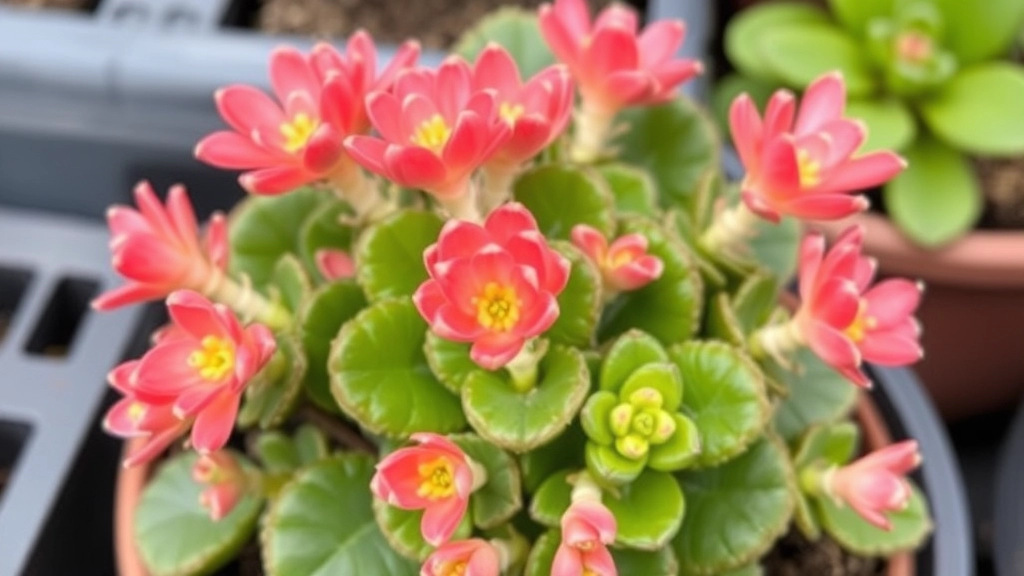Kalanchoe Mother Of Thousands Propagation Guide
Are you eager to dive into the fascinating world of Kalanchoe Mother Of Thousands propagation? You’re in the right place! Whether you’re a seasoned gardener or a beginner, this guide will walk you through everything you need to know about propagating this unique and beautiful plant. We’ll cover various methods, from using plantlets to seeds, and provide essential tips on care and maintenance during the process.
Getting to Know Kalanchoe daigremontiana
First, let’s get to know the Kalanchoe daigremontiana, commonly known as the Mother of Thousands. This plant is famous for its ability to produce numerous plantlets along the edges of its leaves, making it incredibly easy to propagate. By following our step-by-step instructions, you’ll be able to grow new plants from your existing Kalanchoe specimens and enjoy a thriving indoor garden. Stay tuned as we delve into the specifics of preparing the parent plant, propagating from plantlets, and ensuring your new plants flourish.
Overview of Kalanchoe daigremontiana
Are you curious about the unique characteristics of Kalanchoe daigremontiana, commonly known as Mother of Thousands? This fascinating succulent is not only visually striking but also remarkably resilient.
Key Features:
- Appearance: This plant boasts thick, fleshy leaves that are often serrated and can grow up to 30 cm long. The leaves are typically green but can display a bluish tint under certain conditions.
- Propagation: One of its most intriguing traits is its ability to produce numerous plantlets along the edges of its leaves, making it a popular choice for gardeners and plant enthusiasts.
- Flowers: It produces small, tubular flowers that are usually pink or red, adding a splash of colour to your indoor or outdoor space.
Kalanchoe daigremontiana thrives in a variety of environments, making it a fantastic choice for both novice and experienced gardeners. For more detailed care tips, check out our Complete Guide to Growing Kalanchoe Mother of Thousands. Additionally, if you’re interested in exploring other fascinating species, don’t miss our guide on different Kalanchoe species for your garden.
Methods of Propagation

So, you’re keen to propagate your Kalanchoe daigremontiana, also known as Mother of Thousands? You’re in the right place!
When it comes to propagation, this plant is a superstar. There are a couple of straightforward methods you can use, and I’ll break them down for you.
1. Plantlets
This is the most common method. Those little plantlets that form on the edges of the leaves are perfect for propagation.
- Simply pluck them off when they’re a couple of inches tall.
- Let them dry for a day or two to form a callus on the cut end. This helps prevent rot.
2. Leaf Cuttings
Another method is using leaf cuttings.
- Select a healthy leaf and cut it off at the base.
- Place it on soil, cut side down, and keep it moist.
3. Offsets
Kalanchoe also produces offsets, which are small plants that grow at the base.
- Gently separate these offsets from the mother plant.
- Replant them in their own pots.
4. Seeds
Though not as common, you can also propagate from seeds.
- Collect seeds from the flower once they’re mature.
- Sow them in a light soil mix and keep them warm and moist.
These methods are pretty simple and can lead to a thriving collection of Mother of Thousands.
Preparing the Parent Plant for Propagation
Before diving into propagation, it’s crucial to ensure your Kalanchoe daigremontiana, commonly known as Mother of Thousands, is in prime condition. A healthy parent plant is the cornerstone of successful propagation.
Propagating from Plantlets: Step-by-Step Guide

When considering how to propagate Kalanchoe daigremontiana, many enthusiasts often wonder about the best methods to ensure success. Propagating from plantlets is one of the most effective techniques, and I’m here to guide you through it.
Step 1: Identify Healthy Plantlets
- Look for healthy offsets, often referred to as plantlets, that have developed at the edges of the parent plant.
- Ensure they are at least a few inches long for optimal growth potential.
Step 2: Prepare Tools and Materials
- Gather clean scissors or a sharp knife to prevent any infections.
- Have a small pot filled with well-draining soil ready for the plantlets.
Step 3: Remove the Plantlets
- Gently twist or cut the plantlets from the mother plant, ensuring you do not damage the base.
- Aim to keep a small amount of stem attached to each plantlet.
Step 4: Allow to Callous
- Place the removed plantlets in a dry area for a few days.
- This step is crucial as it allows the cut ends to callous over, reducing the risk of rot when planted.
Step 5: Plant the Calloused Plantlets
- Once the ends have dried, insert them into the prepared potting soil.
- Make sure they are upright and not buried too deep.
Step 6: Water Sparingly
- After planting, lightly mist the soil to provide moisture without oversaturating.
- Avoid heavy watering at this stage to prevent rot.
Step 7: Create a Suitable Environment
- Place the pot in a warm location with indirect sunlight.
- This will encourage growth while protecting the delicate plantlets from harsh conditions.
How to Care for Newly Propagated Plantlets
After successfully propagating Kalanchoe daigremontiana, or Mother of Thousands, the next step is ensuring the health and vitality of your new plantlets.
Initial Care for Plantlets
Newly propagated plantlets require special attention to thrive. Here are some essential care tips:
- Acclimatise Gradually: Introduce the plantlets to their new environment slowly to avoid shock. Start by placing them in a shaded area for a few days before moving them to brighter spots.
- Humidity Control: Maintain a humid environment to encourage growth. You can use a humidity dome or a plastic bag to keep moisture levels high initially.
- Avoid Direct Sunlight: While Kalanchoe loves light, direct sunlight can be too intense for young plantlets. A bright, indirect light location is ideal.
Watering Practices
Watering is crucial during this stage. Here’s how to manage it effectively:
- Check Moisture Levels: Before watering, ensure the soil is dry to the touch about an inch down. Overwatering can lead to root rot.
- Use a Spray Bottle: Lightly mist the plantlets to keep them hydrated without saturating the soil.
Nutritional Needs
New plantlets don’t need fertilisation immediately. However, consider the following:
- Wait a Few Weeks: Allow the plantlets to establish roots before applying a diluted, balanced fertiliser.
- Use Organic Options: When ready, opt for organic fertilisers to promote healthy growth without chemicals.
Monitoring Growth
Regular observation can help you catch any issues early. Keep an eye on:
- Leaf Health: Yellowing leaves may indicate overwatering, while browning tips can signal underwatering.
- Pest Activity: Check for common pests like mealybugs or aphids. Early detection is key to effective treatment.
For more detailed care instructions, you can refer to our complete guide to Kalanchoe Mother of Thousands care and propagation. Additionally, if you are dealing with other varieties, our top Kalanchoe Mother of Thousands varieties care tips might be helpful.
Watering Requirements During Propagation

So, you’ve got your Kalanchoe daigremontiana cuttings ready to go. But how do you keep them happy during this crucial propagation phase?
Understanding Water Needs
First off, it’s essential to grasp that overwatering is a common pitfall. New plantlets are delicate, and too much moisture can lead to root rot faster than you can say “Mother of Thousands.”
- Initial Watering: After planting your cuttings or plantlets, give them a light watering. Just enough to moisten the soil without saturating it.
- Frequency: Water sparingly. Check the soil every few days. If the top inch feels dry, it’s time for a drink.
- Signs of Thirst: Yellowing leaves or wilting can signal your plantlets need more water.
Tips for Success
Here are some straightforward tips to nail your watering routine:
- Use Well-Draining Soil: This helps excess water escape, reducing the risk of rot.
- Watering Method: Consider bottom watering. Place the pot in a tray of water and let it soak up from the bottom. This way, you avoid getting the leaves wet, which can lead to fungal issues.
- Humidity Matters: If your environment is dry, misting can help maintain humidity without overwatering.
Choosing the Right Soil for Propagation
When it comes to propagating Kalanchoe daigremontiana, the choice of soil can make or break your success.
Are you worried about your plantlets thriving in the right conditions?
Selecting the right soil is crucial for healthy growth and robust roots.
Ideal Soil Composition
For Kalanchoe daigremontiana, a well-draining soil mix is essential.
Here are some key components to consider:
- Cactus Mix: This is often a go-to option, as it provides excellent drainage.
- Perlite or Pumice: Adding these materials can enhance aeration and prevent compaction.
- Organic Matter: A small percentage of compost can provide necessary nutrients without overwhelming the plant.
Soil pH
Kalanchoe daigremontiana prefers a slightly acidic to neutral pH, ideally between 6.0 and 7.0.
You can easily test your soil pH with a kit from your local garden centre.
Avoiding Common Mistakes
- Heavy Soils: Avoid using regular potting soil, as it retains too much moisture.
- Poor Drainage: Make sure your soil mix allows excess water to escape; this prevents root rot.
By ensuring the right soil mix, you’re setting the stage for successful propagation. For more detailed steps, check out our step-by-step guide on propagating Kalanchoe leaves. If you’re interested in exploring different types of Kalanchoe plants, visit our guide on succulent plants similar to Kalanchoe.
VIII. Light and Temperature Needs for Growth
So, you’ve got your Kalanchoe daigremontiana, also known as Mother of Thousands, and you’re wondering about the best light and temperature conditions for it to thrive.
First off, let’s talk light. This plant loves bright, indirect sunlight. If you can, place it near a window where it can soak up those rays without getting scorched. Here’s a quick checklist:
- Bright, indirect sunlight: Perfect for growth.
- Avoid direct sunlight: This can lead to leaf burn.
- Rotate your plant: This helps it grow evenly.
Now, onto temperature. Kalanchoe daigremontiana prefers warmer conditions. It thrives in temperatures between 18°C to 24°C (65°F to 75°F). Here’s what to keep in mind:
- Avoid cold drafts: They don’t like sudden temperature changes.
- Ideal temperature range: Stick to that 18°C to 24°C sweet spot.
- Winter care: If it gets too cold, bring it indoors.
By ensuring your plant gets the right amount of light and stays in a comfortable temperature range, you’ll set it up for success.
Common Issues in Propagation and How to Fix Them
When propagating Kalanchoe daigremontiana, you may encounter a few hiccups along the way. Understanding these common issues can save you time and frustration, ensuring your plantlets thrive.
1. Failure to Root
One of the most common problems is plantlets not developing roots. This can result from:
- Insufficient Light: Ensure your plantlets receive bright, indirect sunlight.
- High Humidity: While some moisture is beneficial, excess humidity can hinder root development.
- Poor Soil Quality: Use a well-draining soil mix to encourage healthy root growth.
Fix:
- Move your plantlets to a brighter location, avoiding direct sunlight.
- Adjust humidity levels by ensuring good air circulation.
- Use a suitable soil mix, such as cactus or succulent soil.
2. Wilting or Yellowing Leaves
If the leaves of your plantlets begin to wilt or turn yellow, this could indicate stress. Common causes include:
- Overwatering: Too much water can suffocate roots.
- Nutrient Deficiency: Lack of essential nutrients can lead to poor plant health.
Fix:
- Allow the soil to dry out completely before watering again.
- Consider using a diluted, balanced fertiliser to provide nutrients.
3. Fungal Issues
Fungal infections can arise, especially in damp conditions. Symptoms include:
- Mould on Soil Surface: This indicates excess moisture.
- Black Spots on Leaves: These can signal fungal infections.
Fix:
- Reduce watering frequency and improve air circulation.
- Treat with a fungicide if necessary, or remove affected leaves.
4. Pests
Common pests such as aphids and mealybugs can invade your plantlets. Signs include:
- Sticky Residue: This may indicate pest presence.
- Visible Insects: Check the undersides of leaves for pests.
Fix:
Preventing Overwatering and Root Rot

So, you’re excited about propagating your Kalanchoe daigremontiana, but there’s a nagging worry at the back of your mind—overwatering and root rot.
Let’s tackle that concern head-on.
Overwatering is a sneaky culprit that can ruin your plant’s chances of thriving. Here’s how to keep your plant happy and healthy:
Signs of Overwatering
- Yellowing Leaves: If your leaves are turning yellow, it’s a sign that your plant is drowning.
- Wilting: Ironically, overwatered plants can also droop. It’s like they’re confused!
- Mushy Stems: If the stems feel soft or squishy, it’s time to reassess your watering routine.
Tips to Prevent Overwatering
- Check the Soil: Always poke your finger about an inch into the soil. If it feels damp, hold off on watering.
- Use Well-Draining Soil: A mix designed for succulents will help excess water escape.
- Choose the Right Pot: Ensure your pot has drainage holes. No holes? No good!
- Water Sparingly: During propagation, less is more. Aim for a light misting rather than a soaking.
What to Do If You Suspect Root Rot
- Inspect the Roots: If you suspect rot, gently remove the plant from its pot. Look for brown, mushy roots.
- Trim the Bad Parts: Use clean scissors to snip away the rotted roots.
- Repot in Fresh Soil: Move your plant to fresh, dry soil to give it a fighting chance.
As you care for your Kalanchoe daigremontiana, you may encounter some pesky pests and diseases that could hinder its growth. Understanding how to identify and address these issues is crucial for maintaining a healthy plant.
### Common Pests
– **Aphids**
Small, green or black insects that cluster on new growth.
**Solution**: Spray with a mixture of water and dish soap or introduce ladybugs to your garden.
– **Mealybugs**
White, cottony masses found in leaf joints.
**Solution**: Dab them with a cotton swab soaked in rubbing alcohol.
– **Spider Mites**
Tiny red or yellow dots, often causing webbing on leaves.
**Solution**: Increase humidity and spray with insecticidal soap.
### Common Diseases
– **Leaf Spot**
Brown or black spots on leaves, often due to overwatering.
**Solution**: Remove affected leaves and adjust watering habits.
– **Powdery Mildew**
White, powdery fungal growth on leaves.
**Solution**: Improve air circulation and apply a fungicide if necessary.
– **Root Rot**
Caused by overwatering, leading to mushy roots.
**Solution**: Repot the plant in dry soil and remove affected roots.
### Prevention Tips
– **Regular Inspection**: Check your plant weekly for signs of pests or diseases.
– **Cleanliness**: Keep the area around your plant tidy to reduce pest habitats.
– **Proper Watering**: Ensure you’re not overwatering, as this can lead to root rot and other issues.
For more detailed care tips, you might find our [complete care guide for Kalanchoe Blossfeldiana](https://planthq.org/complete-care-guide-for-kalanchoe-blossfeldiana-succulent/) helpful. Additionally, if you notice black spots on your Kalanchoe leaves, check out our article on [causes and solutions for black spots](https://planthq.org/causes-and-solutions-for-black-spots-on-kalanchoe-leaves/).
Repotting and Long-Term Care of Mother of Thousands
So, you’ve successfully propagated your Kalanchoe daigremontiana, and now you’re wondering, “What’s next?”
Repotting and long-term care are crucial to keep your Mother of Thousands thriving.
When to Repot
- Timing: Ideally, repot in spring when the plant is waking up from dormancy.
- Signs: Look for roots poking out of the drainage holes or if the plant seems top-heavy.
How to Repot
- Choose a Pot: Pick a pot that’s slightly larger than the current one.
- Soil Selection: Use well-draining soil, like a cactus mix or a blend of potting soil and sand.
- Remove the Plant: Gently take the plant out, being careful with the roots.
- Inspect Roots: Trim any dead or mushy roots; this will encourage healthy growth.
- Replant: Place the plant in the new pot, fill with soil, and water lightly.
Long-Term Care Tips
- Watering: Let the soil dry out between waterings.
- Fertilizing: Feed with a balanced fertilizer during the growing season, but skip in winter.
- Pruning: Remove any dead leaves to keep the plant healthy and looking good.
Light and Temperature
- Light: Bright, indirect sunlight is ideal. Too much direct sun can scorch the leaves.
- Temperature: Keep it warmâideally between 18-24°C (65-75°F).
For more detailed tips on caring for your plant, check out our complete guide to Kalanchoe Mother of Thousands care and propagation. Additionally, if you’re dealing with any issues like black spots on the leaves, our article on causes and solutions for black spots on Kalanchoe leaves might be helpful.
FAQs on Kalanchoe Mother Of Thousands Propagation
What are the common methods to propagate Kalanchoe Mother of Thousands?
Kalanchoe daigremontiana can be propagated using plantlets, leaf cuttings, offsets, and seeds. Each method has its own steps and requirements.
How do I propagate using plantlets?
To propagate using plantlets, pluck the small plantlets from the edges of the leaves, let them dry for a day or two to form a callus, and then plant them in well-draining soil.
What should I consider when using leaf cuttings for propagation?
Select a healthy leaf, cut it off at the base, and place it on soil with the cut side down. Keep the soil moist to encourage root development.
Can I use offsets for propagation?
Yes, you can. Gently separate the offsets from the base of the mother plant and replant them in their own pots.
Is propagating from seeds a viable method?
While not as common, you can propagate from seeds. Collect mature seeds from the flower, sow them in a light soil mix, and keep them warm and moist.
How should I water my plantlets during propagation?
Water sparingly. Lightly mist the soil after planting and check it every few days. If the top inch feels dry, it’s time to water. Avoid heavy watering to prevent root rot.
What light conditions are best for Kalanchoe Mother of Thousands?
Kalanchoe daigremontiana thrives in bright, indirect sunlight. Avoid direct sunlight to prevent leaf burn and rotate the plant to ensure even growth.
What temperature range is ideal for this plant?
The ideal temperature range for Kalanchoe daigremontiana is between 18°C to 24°C (65°F to 75°F). Avoid cold drafts and sudden temperature changes.
How can I prevent overwatering and root rot?
Use well-draining soil, ensure your pot has drainage holes, and water sparingly. Check the soil before watering and avoid letting it stay damp for prolonged periods.
What are the signs of overwatering?
Signs of overwatering include yellowing leaves, wilting, and mushy stems. If you notice these symptoms, reassess your watering routine.
What should I do if I suspect root rot?
If you suspect root rot, gently remove the plant from its pot, inspect the roots for brown, mushy areas, trim the affected roots, and repot the plant in fresh, dry soil.
References
-
Gardening Know How: Kalanchoe Plant Propagation
-
The Spruce: How to Grow Mother of Thousands Indoors
-
Gardener’s World: How to Grow Kalanchoe
